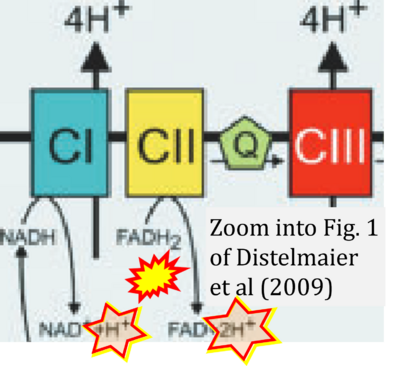Distelmaier 2009 Brain
| Distelmaier F, Koopman WJ, van den Heuvel LP, Rodenburg RJ, Mayatepek E, Willems PH, Smeitink JA (2009) Mitochondrial complex I deficiency: from organelle dysfunction to clinical disease. Brain 132:833-42. |
Distelmaier F, Koopman WJ, van den Heuvel LP, Rodenburg RJ, Mayatepek E, Willems PH, Smeitink JA (2009) Brain
Abstract: Mitochondria are essential for cellular bioenergetics by way of energy production in the form of ATP through the process of oxidative phosphorylation. This crucial task is executed by five multi-protein complexes of which mitochondrial NADH:ubiquinone oxidoreductase or complex I is the largest and most complicated one. During recent years, mutations in nuclear genes encoding structural subunits of complex I have been identified as a cause of devastating neurodegenerative disorders with onset in early childhood. Here, we present a comprehensive overview of clinical, biochemical and cell physiological information of 15 children with isolated, nuclear-encoded complex I deficiency, which was generated in a joint effort of clinical and fundamental research. Our findings point to a rather homogeneous clinical picture in these children and drastically illustrate the severity of the disease. In extensive live cell studies with patient-derived skin fibroblasts we uncovered important cell physiological aspects of complex I deficiency, which point to a central regulatory role of cellular reactive oxygen species production and altered mitochondrial membrane potential in the pathogenesis of the disorder. Moreover, we critically discuss possible interconnections between clinical signs and cellular pathology. Finally, our results indicate apparent differences to drug therapy on the cellular level, depending on the severity of the catalytic defect and identify modulators of cellular Ca(2+) homeostasis as new candidates in the therapy of complex I deficiency.
• O2k-Network Lab: NL Nijmegen Koopman WJ, NL Nijmegen Rodenburg R
Labels:
Enzyme: Complex I, Complex II;succinate dehydrogenase
Correction: FADH2 and Complex II
- FADH2 is shown as the substrate feeding electrons into Complex II (CII). This is wrong and requires correction - for details see Gnaiger (2024).
- Gnaiger E (2024) Complex II ambiguities ― FADH2 in the electron transfer system. J Biol Chem 300:105470. https://doi.org/10.1016/j.jbc.2023.105470 - »Bioblast link«


